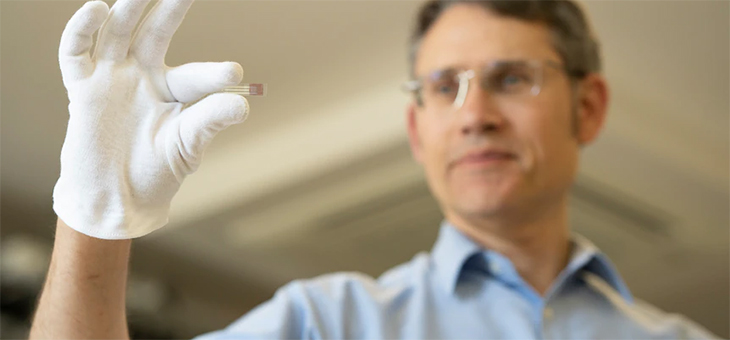Diabetes is the fastest growing chronic condition in Australia, with 280 new cases joining the 1.8 million Australians with the condition every day.
Management of the condition generally involves finger prick tests to gauge blood glucose levels. But that could soon be a thing of the past, with a Newcastle research team announcing it has developed a world-first lickable diabetes test.
Elaine Staunton was diagnosed with type 2 diabetes in her 30s and says her life changed completely.
Also read: The diet that can put type 2 diabetes into remission
“You’ve just got to be very regimented,” she told the ABC. “You have to watch what you eat. You have to make sure you do some exercise. You have to be very aware of your choices.”
The lickable test could again change her life – this time for the better – with the saliva test set to be commercially produced with federal government funding.
Ms Staunton says: “That would be marvellous if we could get that, especially for children. If you’ve got a little child with diabetes … I just can’t imagine how much people’s lives would change.”
Also read: How diabetes can affect your oral health
The test is the culmination of 20 years of research by a University of Newcastle team.
The ‘lickable’ saliva glucose biosensor works by coating a plastic strip with a natural enzyme that interacts with saliva, producing an electrical current. That current is measured and delivers accurate glucose levels via a smartphone app.
Team leader Professor Paul Dastoor says: “What we’ve done is to develop a way of creating biosensors that we can print using reel-to-reel printing equipment.
“We’re able to test and have sensitivities at the concentration levels that glucose is in your saliva. So, we don’t need to test blood, we will now be able to use saliva to test for glucose.”
Also read: Diabetes drug delivers ‘game-changing’ results for weight loss
Prof. Dastoor says he expects painless testing will have a very positive effect on sufferers’ willingness to test and, as a result, on their management of the disease.
“That’s huge because … having to test your blood puts people off doing their testing, and that then leads to poor health outcomes,” he says.
Living with type 2 diabetes will still require management via medication and, in some cases, insulin injections, he says. But Ms Staunton says anything that reduces the need to draw blood up to four times a day would be a welcome relief.
The breakthrough has been announced in National Diabetes Week, which has prompted a warning from Optometry Australia about diabetic eye disease.
Optometry Australia chief clinical optometrist Luke Arundel says that, on average, one in three people living with diabetes will develop some form of diabetic eye disease, with diabetic retinopathy the leading cause of blindness in working age Australians.
Almost everyone with type 1 diabetes and more than 60 per cent of those with type 2 diabetes will develop some form of diabetic eye disease within 20 years of their diagnosis, he says.
Diabetic retinopathy occurs when high sugar content in the blood damages the fine blood vessels in the retina, causing them to rupture and bleed. The retina swells and new blood vessels form, resulting in blurred or distorted vision that can lead to blindness.
Diabetics can also develop cataracts and glaucoma.
Mr Arundel says: “It’s important to understand that diabetes itself does not lead to blindness, however, it can trigger the development and onset of conditions that do impact the eyes.
“The good news is, with timely detection and treatment, 98 per cent of vision loss from diabetes is preventable. That’s why it’s vital Australians living with diabetes undergo regular and comprehensive eye examinations at least once a year.”
He says diabetic-related eye diseases are often asymptomatic until they reach an advanced stage, meaning once vision loss starts to occur, the disease could be well advanced and vision loss irreversible.
He says Australians living with diabetes should look out for sudden changes in vision including:
- blurred vision
- fluctuating vision
- floaters, or dots and dark strings in your field of vision
- impaired colour vision
- partial or total vision loss.
Is diabetes a problem for you or someone you know? Will a saliva test make a big difference? Share your thoughts in the comments section below.
If you enjoy our content, don’t keep it to yourself. Share our free eNews with your friends and encourage them to sign up.

